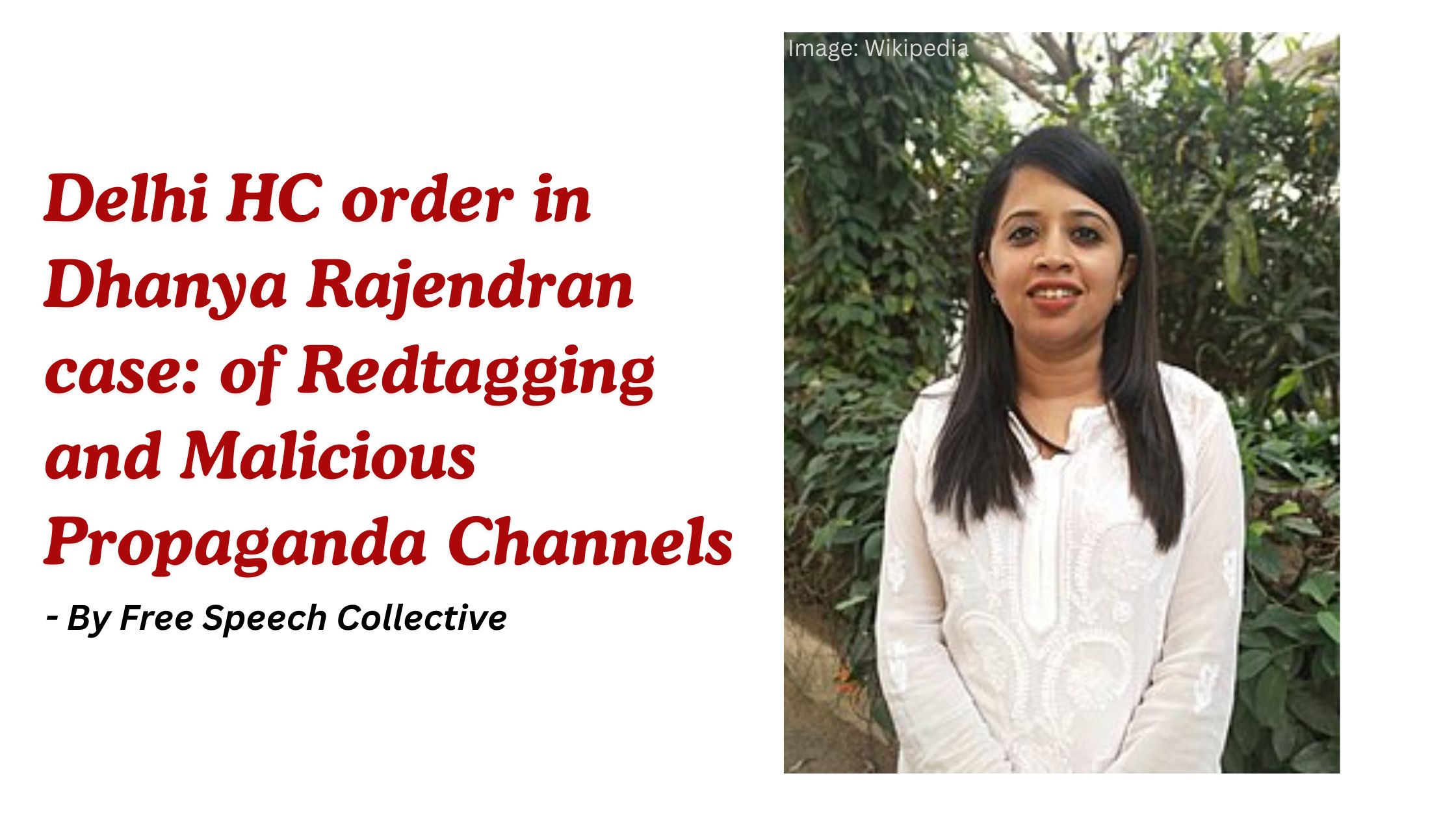
Delhi High Court orders Take Down of ‘False and Malicious’ Reports
The Delhi High Court, in an ad interim injunction, has ordered that nine false, malicious and defamatory URLs of reports and posts on television channels Karma News and Jana TV and newspaper Janambhumi, be removed by July 25, 2024. A commentary by FSC.
For over a decade now, vicious and baseless attacks by right-wing media organisations against independent media seek to censor and silence independent voices of dissent. They drown out facts and reason by the sheer weight of their deliberate misinformation.
Coming from one section of the media against another, they could have been dismissed as mere biased and envious ranting. But often, they act as a propaganda wing of the ruling government and provide ammunition to motivated elements to make accusations that voices of dissent are indulging in “anti-national” activity. In the social media trial that follows, they become judge, jury and executioner.
Can these elements be allowed to run riot? Are they beyond the pale of the law?
No, said the Delhi High Court, granting an ad interim injunction against two television channels -‘The Karma News’ and ‘Janam TV’ and one newspaper ‘Janambhumi’, for their patently ‘false, malicious, defamatory and distorted posts and articles on their websites as well as their YouTube channels’ alleging that the editor of ‘The News Minute’, Dhanya Rajendran and DIGIPUB India News Foundation, an association of over a hundred digital media organisations and independent journalists are ‘agents’ of Hungarian-American businessman and philanthropist George Soros and were funded by him to ‘cause a disruption’ in India and “to “cut” and “divide” the South (South India).”
In his order of July 15, 2024, Justice Vikas Mahajan of the Delhi High Court said that he was “of the prima facie view that the allegations in various posts / videos are not based on any credible and reliable sources for making out a case that the said allegations are true and based on facts” and directed that all the posts and reports broadcast on the television channels and on YouTube must be taken down within ten days of the receipt of the copy of the order.
The judge further said that there was substance in the submissions made by the lawyers for the plaintiffs that “the alleged videos and posts contains defamatory and libellous allegations and insinuations, made in a reckless manner without regard to the truth, to injure the reputation of the plaintiffs.”
According to a petition filed by Rajendran and DIGIPUB, the two channels and the newspaper had published several deceptive and false reports from March to May 2024 alleging that an international media conclave “Cutting South 2023” was funded by Soros with the intention of disrupting and dividing South India.
The ‘Cutting South’ event which was organized by Rajendran and other media channels in partnership with the Kerala Media Academy in Kochi, was attended by over 500 media professionals and students. It was inaugurated by the Kerala Chief Minister Pinarayi Vijayan and its name drew from the popular term ‘Cutting Chai” (or half a cup of tea), not even remotely about dividing South India as alleged by the channels.
Despite its popularity or perhaps because of it, the television channels and newspapers launched a sustained campaign against the event and against the principal organisers. In articles and reports that named and vilified Rajendran, they made wild and totally unsubstantiated allegations that crores of rupees landed in Kochi (the venue of the event) through “hawala” channels and that the organisers of the media event were Khalistani terrorists associated with the Popular Front of India, an organisation which was banned in 2022 by the Union government for “unlawful activity”. Moreover, they claimed that Rajendran and Digipub was under the scanner of intelligence agencies. This building up of a false narrative not only adversely impacts the news eco system but can be extremely dangerous to the journalists targeted.
Another case in point is the ‘red-tagging’ of journalists in the Philippines.
Red-tagging: License to Kill
The government-sponsored labelling of individuals or organizations as communists, subversives, or terrorists, irrespective of their actual political ideology, also called “red-tagging” is a common practice to target critical voices in the Philippines.
The government-backed campaign launched in 1969 to “tag” and counter communist and Maoist organizations, particularly the New People’s Army (NPA), has now become a formidable strategy to suppress dissent. Under the government of former president Rodrigo Duterte and his National Task Force to End Local Communist Armed Conflict (NTF-ELCAC), “red-tagging” to crack down on critics of the government, including journalists, spiked dramatically, and has since continued. The Human Rights Watch in its World Report 2024 said that the practice of “red-tagging” has placed leftist activists and critics at “serious risk” under the administration of President Ferdinand Marcos Jr. Four journalists have been killed after President Marcos Jr took office in 2022. Scores of others have been harassed, surveilled, intimidated and their posters put up in public places, putting them at grave risk of violence by pro-government vigilantes and the security forces.
Prominent journalist and 2021 Nobel Peace Prize laureate Maria Ressa was red-tagged by the government-back media platform, Sonshine Media Network International (SMNI), where she was dubbed “a destroyer of the Philippines” and “enemy of the state” by the show host Lorraine Badoy. Ressa, an outspoken critic of the government, has sued Badoy, stating that her acts have endangered her safety and well-being.
In a significant judgment on May 8, 2024, the Supreme Court of the Philippines declared that “red-tagging, vilification, labelling, and guilt by association threaten a person’s right to life, liberty, or security.”
Pushing back
If the Philippines example sounds familiar, that is because it is. A similar scenario has been playing out in India where some sections of the media have been similarly targeting individuals, leaving them open to harassment and posing serious risks to their freedom. For instance, in 2018, Republic TV and Arnab Goswami made wild allegations and unverified claims about certain individuals, dubbing them “urban Naxals” and part of a “tukde tukde gang” that allegedly wanted to divide India. Right wing digital platforms picked up this false narrative and went on to validate it. Not coincidentally, several of those thus targeted –including lawyers, academicians, journalists and activists– were slapped with cases under the draconian Unlawful Activities (Prevention) Act (UAPA) and incarcerated for years.
Given this scenario, vilification and labelling by sections of the media must not be taken lightly. The Delhi High Court order rights says that the allegations “do not seem to be premised on a public record document such as any criminal case registered or pending against the plaintiff (the complainant).” The court has ordered the removal of the posts and articles by July 25, 2024, failing which the plaintiffs can approach YouTube to do so within 36 hours.
Read the court order here.
Read the NWMI statement here.


